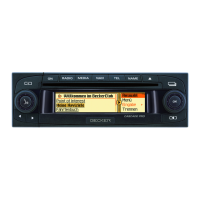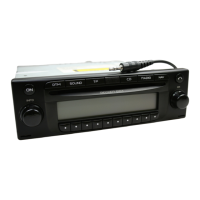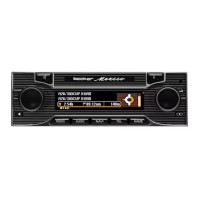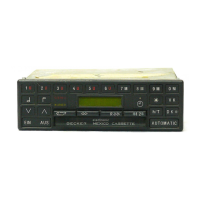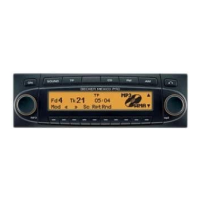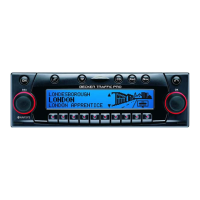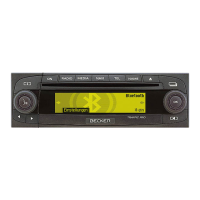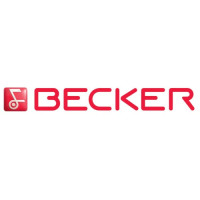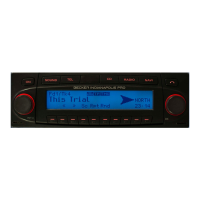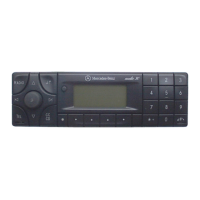90
Media mode
Here is an example of a folder structure
on an MP3 storage medium.
The filled grey rectangles represent fold-
ers/directories. The empty rectangles
symbolise MP3 tracks.
The playback sequence is indicated by
the numbers in brackets starting with (1).
In other words, the tracks played first are
those that are directly on the storage me-
dium and not in a subdirectory.
The letters in brackets starting with (a)
represent the sequence in which the vari-
ous folders/directories can be seen in the
audio fast access mode.
Playlists
Due to the number of MP3 files that can
be saved on a memory card/micro-drive
or CD, this storage medium quickly be-
comes confusing.
You can make it less confusing using
playlists.
In a playlist, you can combine, for exam-
ple, all the desired songs in a category
(e.g. rock).
This playlist can then be burned on the
CD together with the MP3 files that are
stored in folders.
The unit recognises this playlist (several
possible) on reading the MP3 CD and
can then play the MP3 tracks in the order
specified by the playlist.
M3U and PLS playlists are supported by
the Cascade.
Creating playlists
We used the WINAMP freeware in our
trials for creating playlists. However,
other programs may also be used to cre-
ate playlists.
The playlist formats M3U and PLS are
supported by the unit.
For further information about creating
playlists, please check on the Internet.
